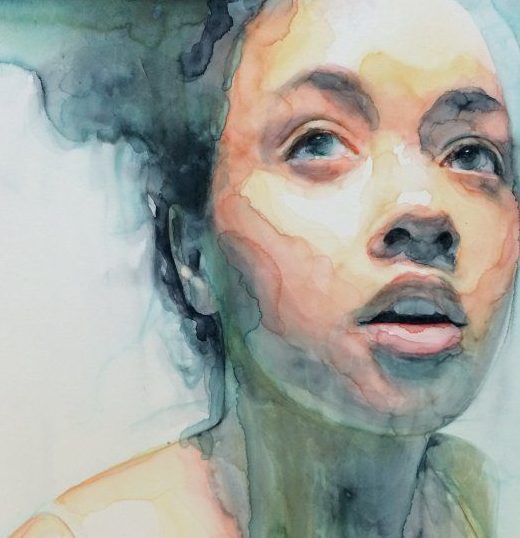Common POV Violations and How to Catch Them
Nailing proper use of POV (point of view) is a challenge for many fiction writers. It seems easy, right? Whoever has the point of view in a scene is telling and showing the events unfolding. You can only be in one head per scene, the current “rule” goes. Back in the day (some decades ago), head hopping wasn’t tagged as a violation. But it is today.
However, it’s not that easy. Pitfalls abound when it comes to POV, but with help, writers can spot them.
One writing instructor handed out empty toilet paper rolls to his students in class and instructed them to look through the cardboard tube. He told them, “That’s your character’s POV—anything you can see through that tube.” A clever way to get across the concept of POV.
But there is so much more to POV than what a character sees. Regardless of whether you are writing in first-person or third-person POV, deep or shallow or omniscient, the entire scene—including the narrative—falls under the purview of POV.
That means the character’s voice, knowledge, background, and personality inform every word in a scene. Essentially, it’s all in her head, spoken or not. And this fact is what often trips up writers. While keeping faithful to POV in action and direct thoughts, they fail to pay attention to the rest. And maybe some readers won’t notice the slipups. But others will. And more importantly, the integrity of a scene breaks down when POV violations seep in.
One Head at a Time
One of the most central tenets of limited POV is that it limits us to one character at a time, and that means you can’t write in the head of more than one character a time. Obvious, right? But it’s surprisingly easy to get tripped up in practice. Jumping from one character to another within a scene is called “head hopping.”
Head hopping is bad because it diffuses the most powerful thing about limited POV and the reason most authors switched over to using it in the first place: staying in one person’s head within a scene allows us to get far deeper into all the emotional and mental under-layers of a story and experience it all the way down, from the inside, the same way we experience real life.
Take a look at this passage and see if you can spot the POV violations:
Jackie tensed, staring at the frosted windowpane. Her heart raced as the footsteps outside stopped, where the man in the darkness stood thinking, weighing his next move.
The glass shattered.
She screamed. The temperature in the room dropped as cold air blew in and the stranger came in with it.
Peter straightened and brushed the glass from his coat and jeans with his free hand. With the other, he trained his gun on Jackie. This wouldn’t be hard—all he had to do was take one hostage, and he could get home.
She stared into the barrel of the Springfield XD-S pistol. There were five, maybe six, feet between them. A bullet traveled at the speed of 2,500 feet per second. She could not possibly move fast enough to get away.
Here are the POV problems:
- Jackie not only knows it’s a man outside, she also knows what he’s doing—thinking, weighing his next move.
- When he comes into the room, this “stranger” is suddenly identifiable by name—and she doesn’t know his name.
- Not only that, Jackie knows way too much about guns and the laws of physics, not things her character would know, which makes the facts about them out of POV. (This is intrusion not of another character but of an omniscient narrator who knows more than the character does.)
Let’s consider a better rewrite that corrects these POV issues:
Jackie tensed, staring at the frosted windowpane. Her heart raced as the footsteps outside stopped. Someone was out there. Something waiting in the dark . . .
This was so much like last time.
The glass shattered.
She screamed. The temperature in the room dropped as cold air blew in, and the stranger came in with it.
She stared into the barrel of the handgun. There were five, maybe six, feet between them. She could not possibly move fast enough to get away.
Tall, dressed in black, his eyes piercing, the man brushed the glass from his coat and jeans with his free hand. With the other, he trained his gun on Jackie.
Tears pricked her eyes. Would she ever be fast enough? Or was life going to end right here—too slow, too stupid to escape the doom she could always see coming?
Do you see how those POV errors were corrected?
Your POV Character Can’t Know Things She Doesn’t Know
Keep in mind that limited POV means you can use perceived details to reveal your characters and their stories in intimate ways. If Jackie knows Peter, his name can be used—but her reaction to him will also be very different, and you can delve as deep as you want into the dynamics of their relationship and how she feels about seeing him here.
If for some reason she knows a lot about guns, the gun details can stay in—and her calculation of a bullet’s speed would tell us a lot about her analytic personality. But this would necessitate setting up her expertise in this field earlier in the novel.
Your POV Character Can’t Know What Others Are Thinking
In the first example, the most egregious bit of head hopping is the line that tells us what Peter is thinking and what he’s intending to do. There we’ve gone whole hog from one character’s head into another’s and then back again. This not only makes us dizzy, it also drains some of the tension from the scene and prevents us from closely identifying with one character.
When you self-edit, ask yourself whether your character knows the things you’re conveying. Check to make sure that if you’re in Jackie’s head, and you’re not relaying Peter’s thoughts—or information that only an omniscient narrator is privy to.
Your POV Character Does Know What She’s Thinking and Feeling
And take advantage of the head you’re in. Let personality come through. Let your character’s perception and history and hopes and fears color the way events are experienced. That’s the reason for the lines added in the After paragraph. They fill in Jackie’s feelings, her fears, and her past. The way she’s experiencing this moment in the larger story of her life.
It makes no sense to show your POV character on the phone with someone she knows but you don’t name that person. Often beginning writers will play out a phone scene as if watching it from across the room instead of being experienced by the POV character herself. There will be pauses in which the person on the other end of the line is speaking and the POV character is listening, but what is said is not shown. Your character knows what is being said and who is speaking. So you have to show that.
One thing I see a lot in manuscripts I edit and critique is the POV character using someone’s name when they don’t know it. Perhaps the reader has been introduced to this character earlier, via another POV. But if George has never seen or met Ralph, you can’t use Ralph’s name in the scene, in George’s POV, until George learns it. Now, he might guess the guy coming at him is Ralph because of information he has. But he can’t be sure.
The key to POV is to keep in mind that every single line of a scene is essentially the POV character’s thoughts.
Be sure you stay in your character’s head and voice when you’re writing, because when you don’t, you’ve slipped into a POV violation, and that can be a slippery slope.
Featured Photo by Donald Teel on Unsplash












An excellent post. You show clearly what to do and not to do to remain in the character’s POV.
Thank God for my critique group, whose members keep us all in the proper POV. ONe thing that happens frequently is the character seeing herself or himself – their expressions!